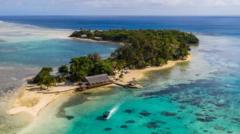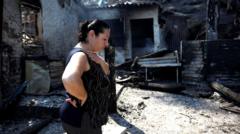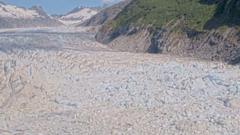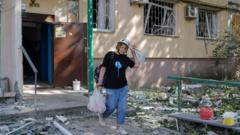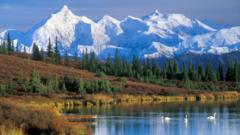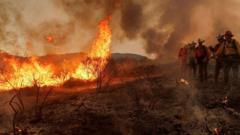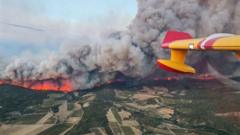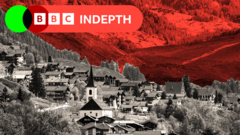With the Mendenhall Glacier's meltwater causing alarming water levels in nearby rivers, local officials in Juneau are urging evacuations as they brace for potentially record-breaking flooding. Governor Dunleavy has declared a state disaster as the risk of glacial outburst floods continues to rise amid ongoing climate concerns.
Alaskan Communities on High Alert as Glacial Melting Triggers Flood Threats
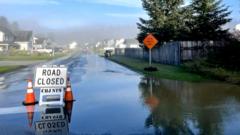
Alaskan Communities on High Alert as Glacial Melting Triggers Flood Threats
Evacuations are underway in parts of Alaska as a glacial melt prompts fears of unprecedented flooding due to an ice dam failure.
As Alaska faces an imminent flood crisis, residents near the Mendenhall Glacier are being forced from their homes after an alarming rise in meltwater levels. The National Weather Service in Juneau has issued a flood warning, confirming that water has begun to overflow a dam formed by the glacier, threatening properties in the capital city, Juneau.
Authorities have been on high alert, advising residents about potential evacuations for days, and the situation escalated when water levels rose significantly above previous thresholds by Wednesday morning. On Tuesday, the National Weather Service noted that levels had climbed to 9.85 feet, below the major flooding threshold of 14 feet, but surged above 16 feet by the following morning—signaling a crest that is likely to set a new record.
“This will be a new record, based on all of the information that we have,” stated meteorologist Nicole Ferrin during a press conference, emphasizing the severity of the flooding situation. The Juneau city website provided context about how these glacial lake outbursts occur, comparing the process to pulling a plug from a bathtub when meltwater from snow and ice accumulates, eventually spilling over their glacial barriers.
In response to the escalating crisis, Governor Mike Dunleavy issued a state disaster declaration on Sunday in light of the “imminent threat of catastrophic flooding from a glacier lake outburst flood (GLOF)” in the area. Flooding has posed an annual challenge since 2011, with many homes damaged or destroyed by sudden water surges, particularly last year when hundreds of residences suffered extensive harm.
Global climate change continues to exacerbate the melting of mountain glaciers and the formation of dangerous glacial lakes. Researchers have noted an uptick in both the occurrence and size of these lakes since 1990, with concerns that continued climate shifts will result in more frequent outburst floods in the years to come. While patterns related to previous floods may be complex, the consensus among scientists points to an increasing risk as temperatures rise.



